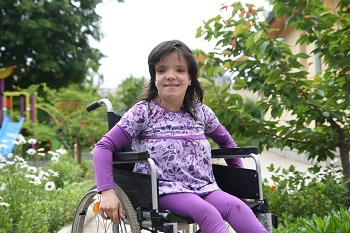Data gaps on children in residential care leave the most vulnerable unaccounted for – UNICEF
At least 2.7 million children are living in residential care, but this is just tip of the iceberg, study says
At least 2.7 million children live in residential care worldwide, according to a new estimate by UNICEF. Yet the figures, published in Child Abuse & Neglect on Jun 01, are likely to be just the tip of the iceberg, with wide gaps in data collection and accurate records found in the majority of countries.

Stanislava is a 15-year-old girl. After her birth she was placed in several old type state institutions for children. Now she lives in a family type placement center (small group home) for children with disabilities and attends mainstream school.
“In residential care, such as institutions or orphanages, children who are already vulnerable due to family separation are at increased risk of violence, abuse and long-term damage to their cognitive, social and emotional development,” said Cornelius Williams, Associate Director of Child Protection at UNICEF. “The priority is to keep children out of residential care and with their families, especially in the early years.”
UNICEF’s new estimate is based on data from 140 countries. Central and Eastern Europe was found to have the highest rate worldwide, with 666 children per 100,000 living in residential care, over 5 times the global average of 120 children per 100,000. Industrialized countries and East Asia and the Pacific region have the second and third largest rate with 192 and 153 children per 100,000 respectively.
UNICEF’s study emphasizes that many countries still lack a functional system for producing accurate figures on the number of children in alternative care. In many countries, official records only capture a small fraction of the actual number of children living in residential care and children in privately owned centres are often not counted.
“It is critical that governments keep more accurate and comprehensive listings of all existing residential care facilities, as well as regularly undertake thorough counts of children living in these facilities in order to help strengthen official records,” said Claudia Cappa, Statistics Specialist at UNICEF and co-author of the study. “That way we will be able to measure the breadth of the problem and work with governments to respond effectively.”
Research shows some of the key risk factors that result in children being placed in residential care include family breakdown, health issues, poor or unequal provision of social services, disability and poverty.
Governments are urged to reduce the number of children living in residential care by preventing family separation where possible, and by seeking homes for children in family-based care such as foster homes. Stronger investment in community-based family support programmes is also needed, UNICEF said.
Source:United Nations Children's Fund
- 344 reads
Human Rights
Fostering a More Humane World: The 28th Eurasian Economic Summi

Conscience, Hope, and Action: Keys to Global Peace and Sustainability

Ringing FOWPAL’s Peace Bell for the World:Nobel Peace Prize Laureates’ Visions and Actions

Protecting the World’s Cultural Diversity for a Sustainable Future

Puppet Show I International Friendship Day 2020

